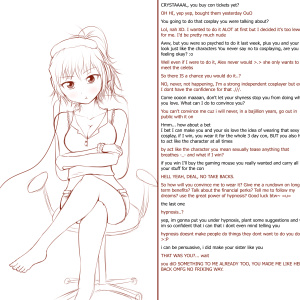

Jab Comix Ay Papi 14 (Jab Comix) Jab Comix Cartoon, family. Jab Comix Ay Papi 15 (Jab Comix) Jab Comix family, Son-Mom. Jab Comix Omega Girl 1 (Jab Comix) Jab Comix Action, Adventures, Cartoon.
Ay Papi 19 Comics Download Jab Comix
If it is a dash ( -) it is a file. You can free download Jab Comix Ay Papi 19 Sexcomics naked photos with high resolution on.On each line, the first character identifies the type of entry that is being listed. We also bring daily updates, so be sure to check all new posts, download and enjoy best from the market.Jab Comix Ay Papi 19 Sexcomics is top nude porn photo Collection. The latest update of this 2D Comics has been uploaded on , please folow us to get all new updates and releases.
If the character is an r, w, or an x, that permission has been granted. If the character is a dash, it means that permission is not granted. The characters are indicators for the presence or absence of one of the permissions. They are either a dash ( -) or a letter. The last three characters show the permissions for anyone not in the first two categories ( other permissions).There are three characters in each set of permissions. The middle three characters show the permissions for members of the file’s group ( group permissions). The first three characters show the permissions for the user who owns the file ( user permissions).
- means no permissions have been granted at all. If the file is a script or a program, it can be run (executed). The file can be edited, modified, and deleted.
These show that the owner has full permissions. This line refers to a directory called “archive.” The owner of the directory is “dave,” and the name of the group that the directory belongs to is also called “dave.”The next three characters are the user permissions for this directory. The read, write, and execute indicators are all present.In our screenshot, the first line starts with a d.
They do not have write permissions, so they cannot create, edit, or delete files.The final set of three characters are also r-x. That means they can list the files and their contents in the directory, and they can cd (execute) into that directory. These show that the members of the dave group have read and execute permissions for this directory. This means the user dave has read, write and execute permissions for that directory.The second set of three characters are the group permissions, these are r-x.
Which: Which of the permissions are we setting?We use indicators to represent these values, and form short “permissions statements” such as u+x, where “u” means ” user” (who), “+” means add (what), and “x” means the execute permission (which). What: What change are we making? Are we adding or removing the permission? Who: Who we are setting permissions for. Understanding The Permission SyntaxTo use chmod to set permissions, we need to tell it: The owner, a user called dave, also has write permissions.For all of the other files (apart from the mh.sh script file) dave and members of the dave group have read and write properties on the files, and the others have read permissions only.For the special case of the mh.sh script file, the owner dave and the group members have read, write, and execute permissions, and the others have read and execute permissions only. These people (called”others”) have read and execute permissions on this directory.So, to summarise, group members and others have read and execute permissions.
If you want to have this permission and only this permission set, use the = option, described below. The permission is added to the existing permissions. o: Others, meaning people not governed by the u and g permissions.If none of these are used, chmod behaves as if “ a” had been used. g: Group, meaning members of the group the file belongs to.
No other files have been affected.If we had wanted to include files in subdirectories, we could have used the -R (recursive) option. We can do using the following command: chmod u=rw,og=r new_file.txtUsing the “=” operator means we wipe out any existing permissions and then set the ones specified.Let’s check the new permission on this file: ls -l new_file.txtThe existing permissions have been removed, and the new permissions have been set, as we expected.How about adding a permission without removing the existing permissions settings? We can do that easily too.As we can see, the read permission has been removed from the “.page” files for the “other” category of users. Ls -l new_ file.txtWe want the user dave to have read and write permissions and the group and other users to have read permissions only.

Using 1 (001) would remove the read and write permissions and add the execute permission. So if read and write permissions were already in place you would have to use 7 (111) to add execute permissions. 2, which is 010 in binary, would mean the write permission.Using this method, you set the permissions that you wish to have you do not add these permissions to the existing permissions. 7: (111) Read, write, and execute permissions.Each of the three permissions is represented by one of the bits in the binary equivalent of the decimal number. So 5, which is 101 in binary, means read and execute.


 0 kommentar(er)
0 kommentar(er)
